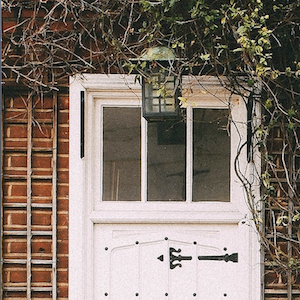Revisited Through The Eras; Best Chair to Lounge In
By Janhavi Khandelwal
In our world where the pace of our lives seems to quicken with each passing day, finding those rare moments of relaxation has become a precious commodity. Yet in the quiet echoes of ancient leisure and amidst the ever-quickening pulse of modern life, the chaise longue, ( French for long chair an upholstered sofa) stands as a testament to the artful evolution of resting an ageless pursuit. Shaped and adapted across eras, yet unwavering in its commitment to providing a sanctuary for repose. Through changing forms and designs, its purpose remains a timeless celebration of comfort and chilling out. Read more in Chairs That Have Been Revisited Through The Eras. Image on left LC4 Chaise from Chaplins
We all seem to moan about modern life being too busy yet the desire for a comfortable place to recline and unwind is not a modern phenomenon.

Ancient cultures also understood the importance of rest, as evident in the luxurious lounging furniture found in Egyptian, Greek, and Roman civilizations. Whether it was a Roman lectus (long chair) or a Greek kline, these early lounging pieces set the stage for the evolution of reclining furniture.

This chaise longue, or “long chair” in English, made its mark during the opulent periods of the Renaissance and Baroque in Europe. It was French craftsmen who elevated lounging to an art form, creating ornate and elegant chaise longue that graced the homes of the aristocracy. As styles evolved and ‘leisure ‘ continued through the Neoclassical era and into the 19th century, the chaise longue became a symbol of sophistication and rest.
The 20th century ushered in a new era of design, marked by the pioneering work of architects like Le Corbusier, Pierre Jeanneret, and Charlotte Perriand. Their LC4 Chaise Longue, conceived in 1928, was a groundbreaking piece that embraced modernist principles. Simplifying forms, shedding unnecessary embellishments, and infusing a contemporary touch, other designers redefined the LC4 Chaise Longue. Its sleek lines and functionality marked a departure from the ornate designs of the past, offering not just a piece of furniture but an iconic representation for resting and chilling, reminiscent of the warmth and ease of home.
With the LC4 as a catalyst, designers around the world began exploring new possibilities for the chaise longue. The notion of lounging expanded beyond traditional constraints, giving rise to innovative materials, shapes, and functionalities. In this exploration, designs like the “Rio” emerged, created by the talented duo Oscar Niemeyer and Ana Maria Niemeyer.
The “Rio” chaise longue is a testament to the evolving landscape of relaxation furniture. Designed by the acclaimed Brazilian architect Oscar Niemeyer and his daughter Ana Maria Niemeyer, “Rio” captures the spirit of modern leisure. Its fluid lines and organic form reflect the dynamic energy of the Brazilian city it is named after, inviting users to unwind in style.
In the present day, the joy of lounging, resting, and chilling continues to inspire designers worldwide. From minimalist renditions to avant-garde creations, contemporary chaise longue caters to diverse tastes and interior aesthetics. As technology and design principles advance, the boundaries of comfort are pushed further, ensuring that the art of relaxation remains both timeless and ever-evolving.
In the pursuit of pleasure and repose, the chaise longue stands as a symbol of the enduring human desire for moments of respite. Whether in the classical elegance of the past, the modernist revolution of the 20th century, or the innovative designs of today, the essence of lounging remains a celebration of the simple and profound joy of resting and chilling.
If you enjoyed reading Chairs That Have Been Revisited Through The Eras why don’t you try The Art of Glass; Its Historical Beating Heart
.Cent Magazine London, Be Inspired; Get Involved








